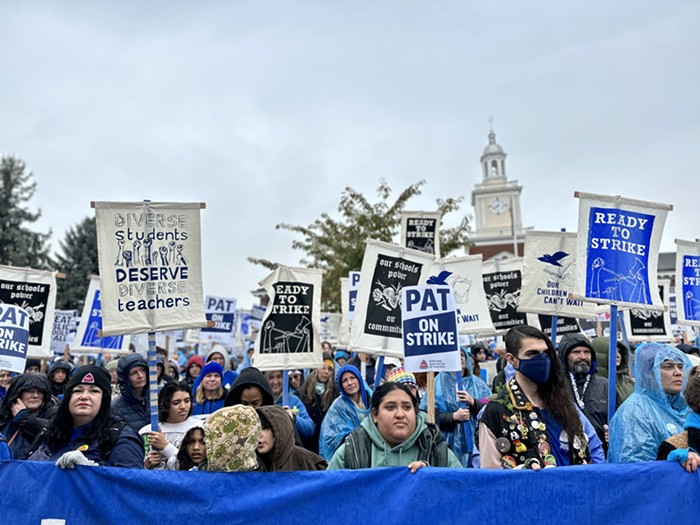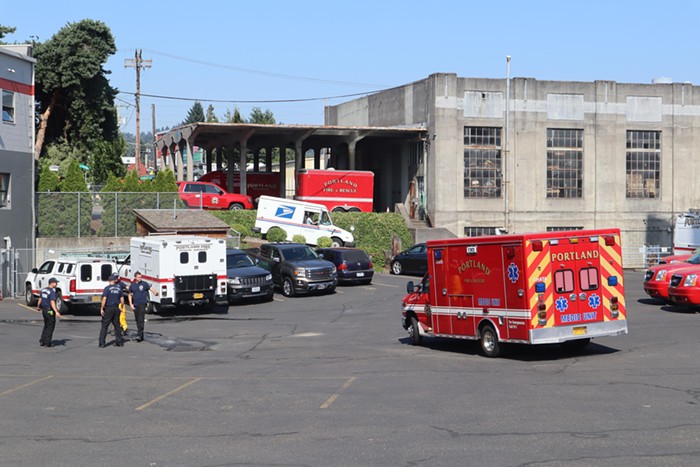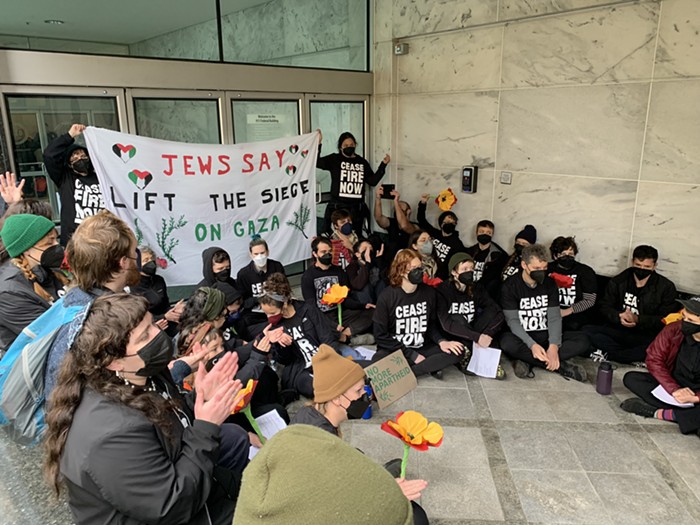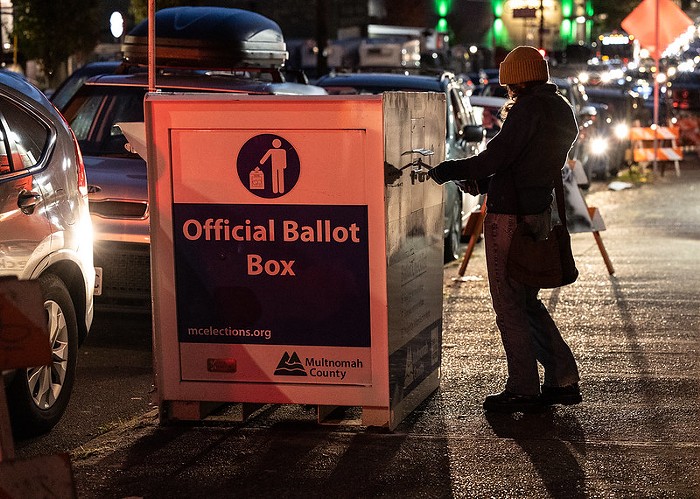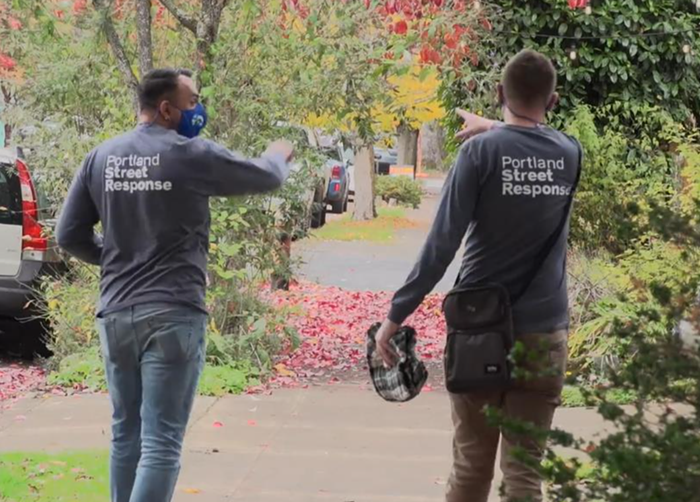
If you've somehow missed it, the Morrison Bridge is falling apart after a recent rehab. The Multnomah County-owned span is now closed about one day a month, so workers can identify which of the new polymer panels are coming undone, cracking, or shifting about. (Having recently walked over the bridge while covering a Ferguson protest, I've got to say it doesn't look so hot.)
It's the sort of situation that lends itself to a lawsuit, and the county's currently sparring with a bevy of contractors, engineering firms, and suppliers in court, trying to get some money back for the $5 million project. County officials say the contractor that did the job was incompetent, and that the materials supplied for the bridge rehab were flawed.
Now, the suppliers of those materials are admitting those flaws in court documents, and saying the county's powerless to do anything about it. In a motion filed last week, Virginia-based Strongwell Corporation, which manufactured the problematic stuff, says the county knew it had cracks, patches of missing material, and irregular dimensions—and accepted it anyway.
"Strongwell will agree that all three of these issues, arguably, could be due to problems in manufacture of the FRP [Fiber-Reinforced Polymer] in Strongwell's plant in Virginia," reads the filing. "This motion is based on the fact that the County initially 'called out' all three of these items and initially rejected these materials because of these issues. But after some testing and other investigation, the County agreed the issues with these materials were of little or no significance."
Such acceptance, Strongwell argues, frees it from any liability in the bridge troubles. Another company, North Carolina-based ZellComp, which designed the deck system, signed on to the same reasoning. Both companies are asking a judge to toss the county's claims.
We've known for months that the county decided to use the flawed decking, despite noting the cracks and other problems posed risks (officials demanded a $50,000 discount instead of better deck panels). This is the first time, though, that that acceptance has been used as a potential barrier to the lawsuit, which is scheduled for trial early next year.
As we reported earlier this month, the county's trying to decide how to best fix the bridge, which engineers believe could begin deteriorating at an even faster pace at some point. Officials initially wanted to try an innovative aluminum surface, or a brand new steel grate (the same type of deck that was replaced with polymer in 2011). But state and federal officials have opposed both those ideas.
So the county's considering trying the polymer again.
